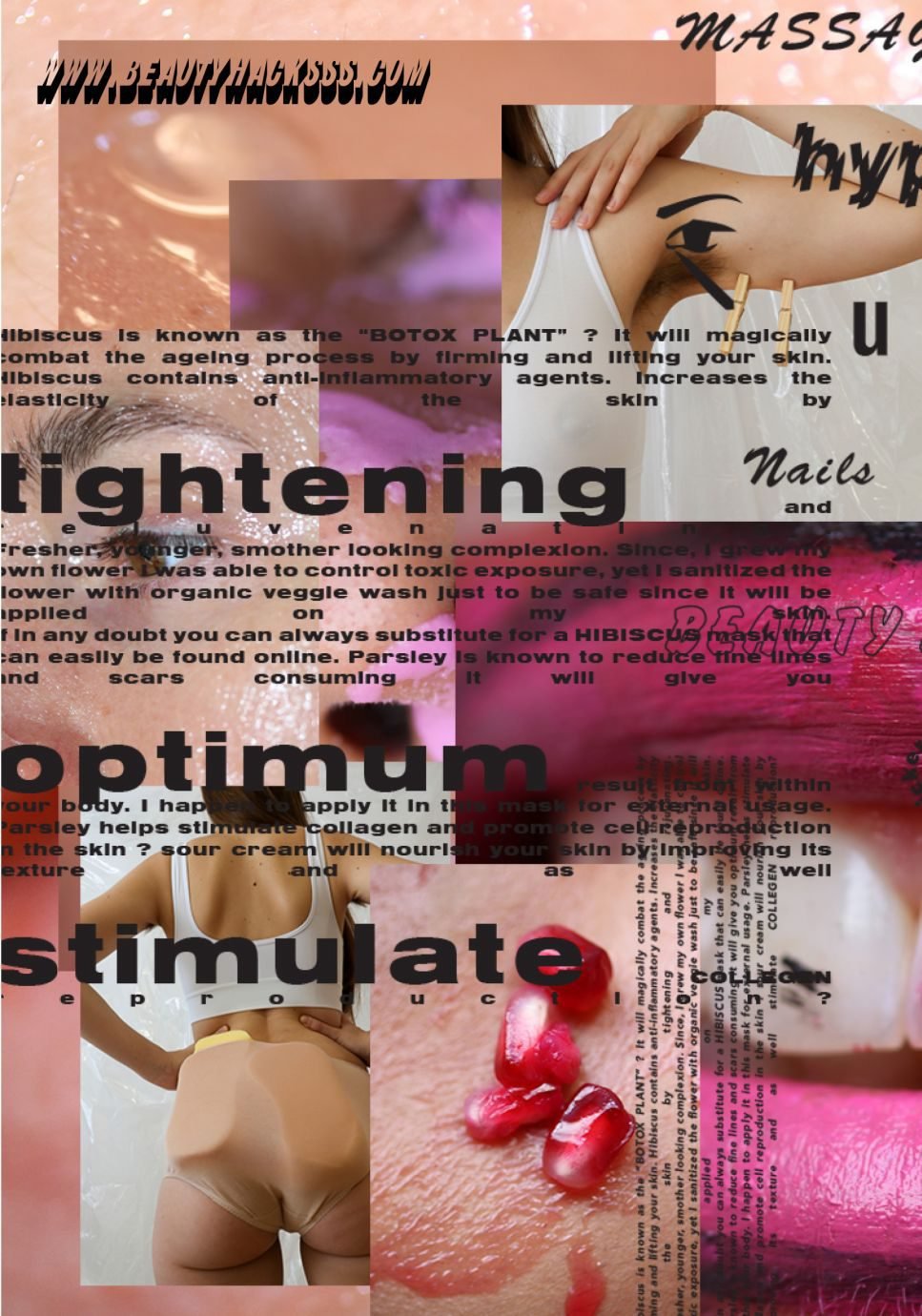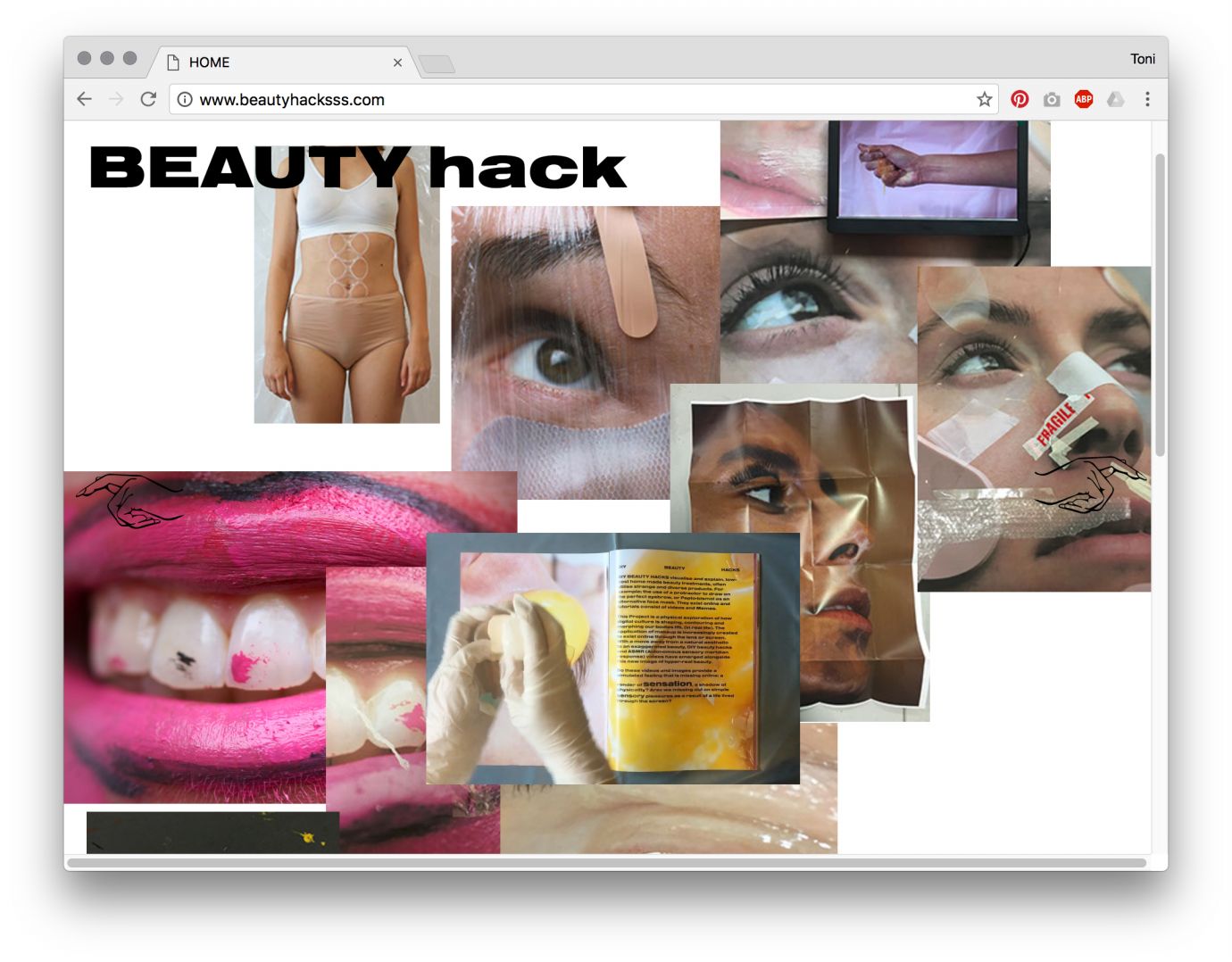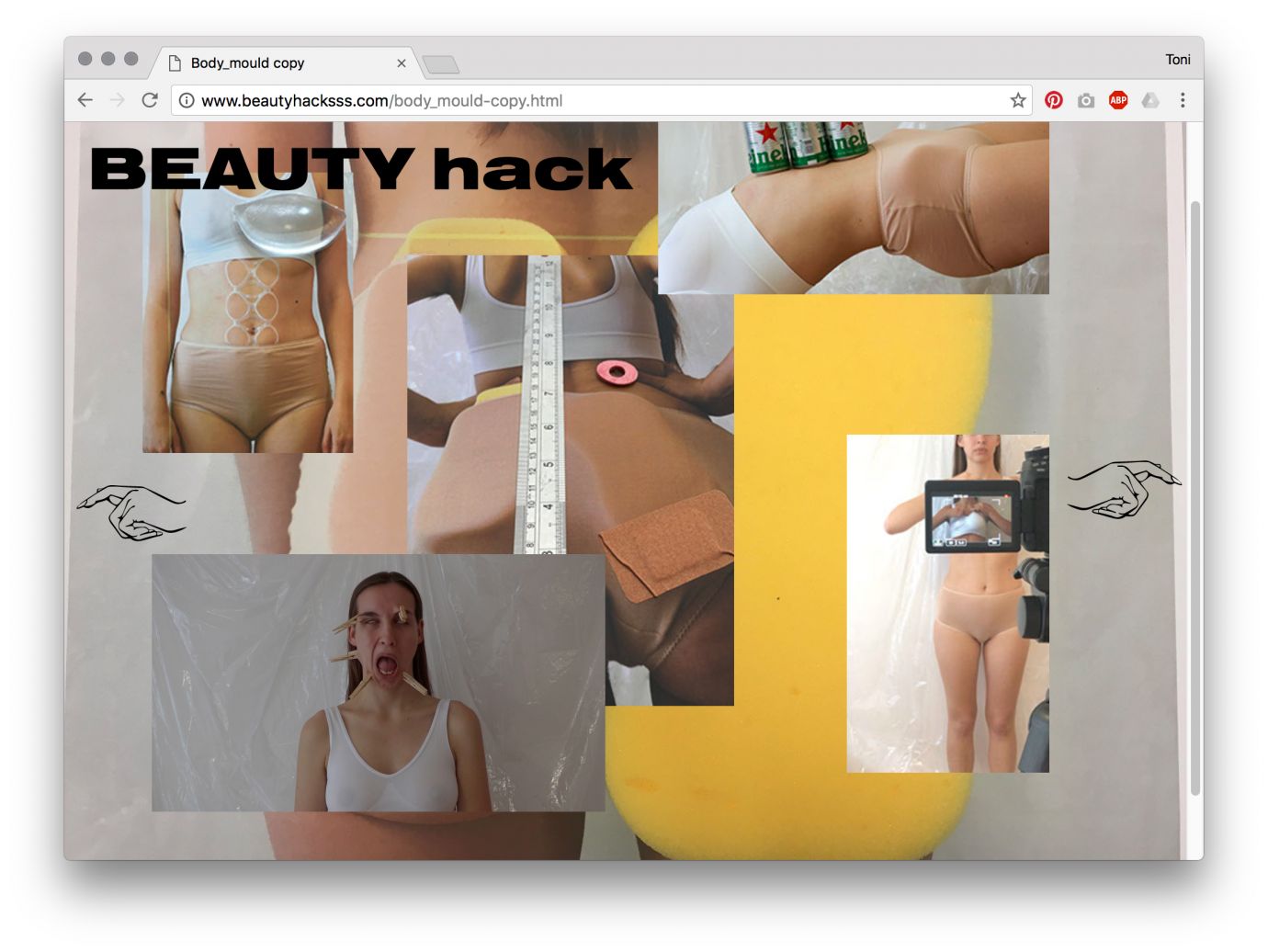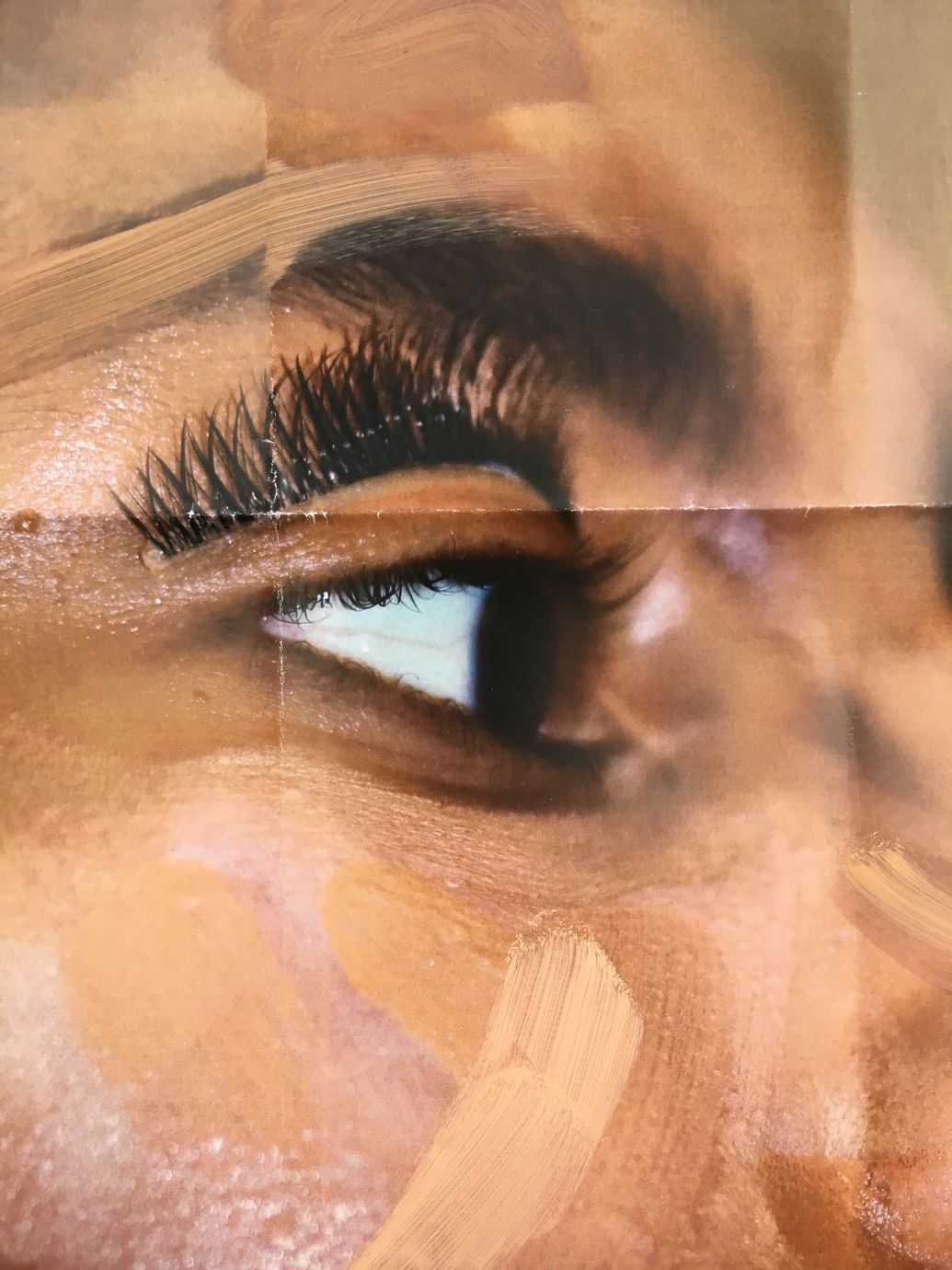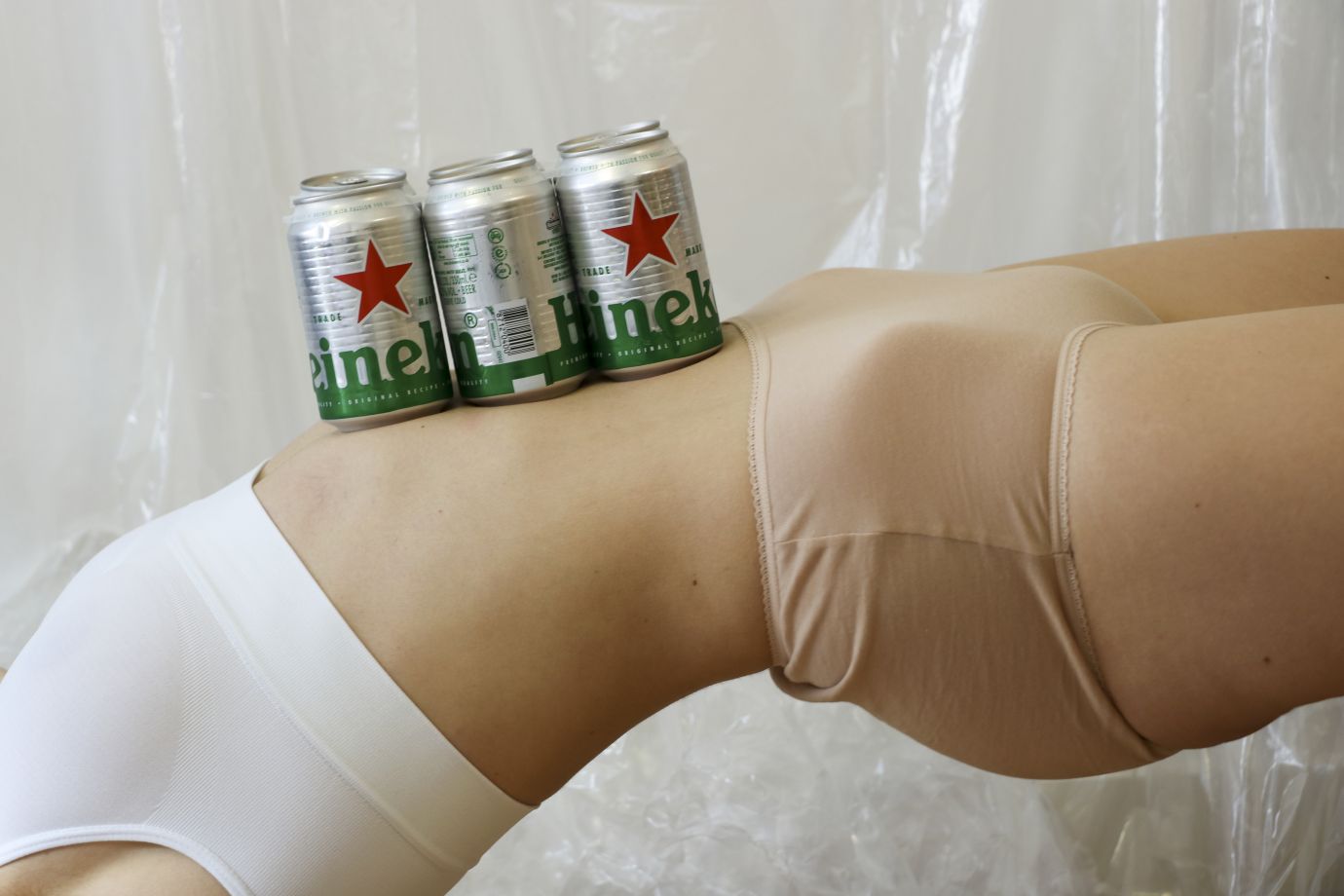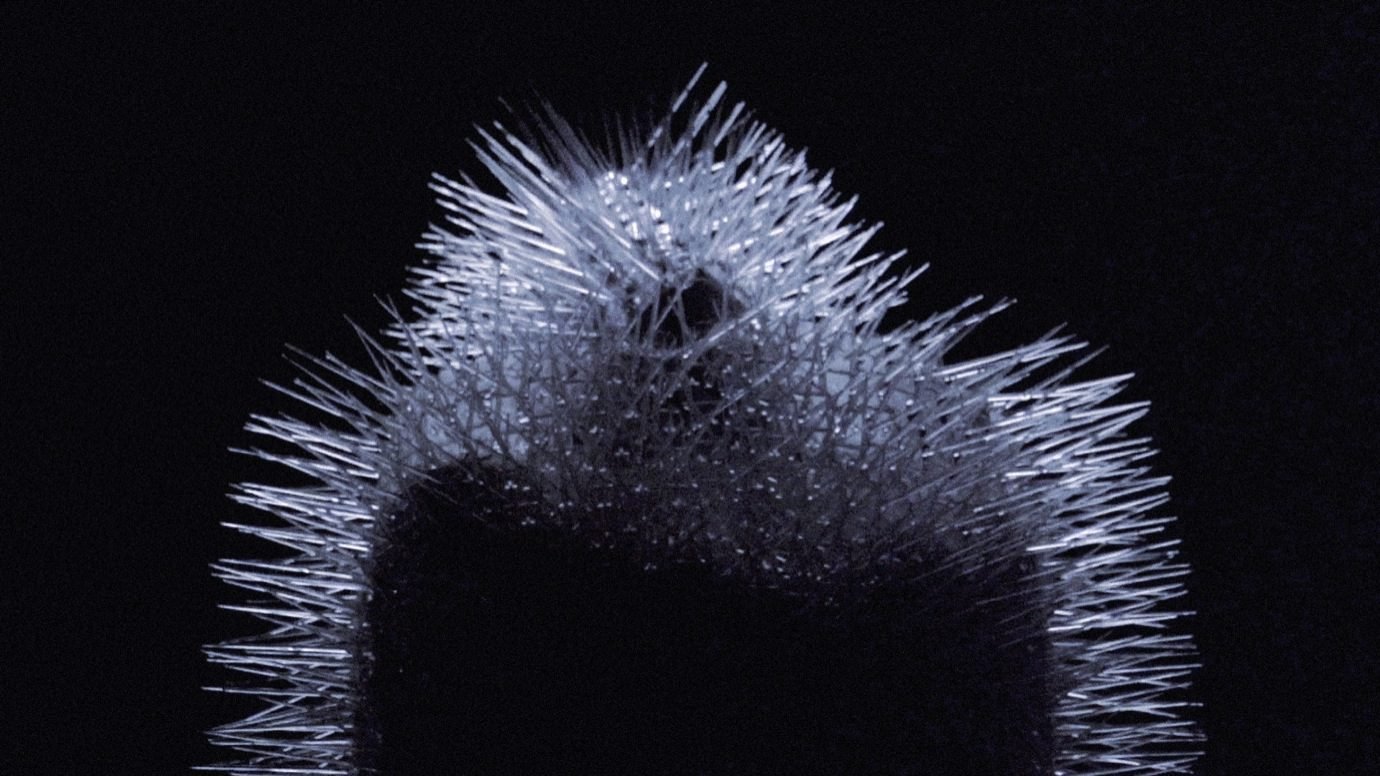“INTERESTING IS MORE IMPORTANT THAN BEAUTIFUL.”
Beauty Hacks: bridging URL and IRL through make-up
For someone who enjoys the tactile experience of making things with her own hands, experimenting with DIY beauty treatments came naturally for Toni Hollowood. The designer-cum-art director recently graduated from MA Fashion Communication at CSM, where she spent a good amount of time convincing her tutors that her final project, Beauty Hacks, should be considered fashion – only without garments. To her, beauty belongs to the same world. “It’s cyclical, it runs in trends. I would compare the skill of creating amazing makeup to someone who makes an amazing garment.”
However, it was not so much beauty being recognised as fashion that Toni was concerned with. Beauty Hacks is more than just skin-deep. Having worked in small design studios as well as a large corporate fashion company prior to her MA, Toni was intrigued by the way imagery and media affect our consumption behaviour, and how our self-image is constructed around these influences. “When you’re behind the scenes making these images, and then you see the picture that you made at the airport and people buying the product, it’s a really weird feeling. I didn’t think it was something I was entirely comfortable with.” Putting that discomfort into question, Toni observed that popular culture usually takes place in mass media before entering the mass market. Especially with internet and social media proliferating, Instagram and blogging are gaining sensational momentum in developing cultures online before they happen in real life.
Beauty Hacks looked at an exemplary phenomenon: beauty bloggers and DIY makeup treatments. Like other counter-cultures manifesting online, this beauty trend provides an alternative to what’s being sold to us in the market – expensive, luxury beauty products. They teach us that one can draw the perfect brows using a protractor rather than purchasing an expensive eyebrow kit. Or that we don’t need to get a face mask, when we can simply use Pepto-Bismol. Big companies started adopting these hacks, and hiring bloggers to market their products. A great example of this is the use of silicone breast implants as an applicator tool for foundation as opposed to the mainstream beauty blender.
Toni decided to centre her project around beauty, as clothing trends change too quickly to make an example that would still be relevant by the time the project was materially realised. In addition, Toni finds beauty more far-reaching in being inclusive. It affects everyone and is more accessible to the wider public across race, class and age, particularly with DIY beauty hacks. “My sister even told me that my nephew, who is ten, had friends, boys, who watch these DIY beauty videos on the internet. It has mass appeal and a broad and unpredictable audience.”
Indeed, more beauty startups are increasingly leaning towards social and environmental consciousness, using organic ingredients while being inclusive in its diverse model casting. It’s an aspect that high-end luxury beauty has unfortunately yet to catch up with: recognising that the consumer wants themselves represented by the product they buy. “If you go into Boots and look at all the perfume advertisements, it’s always a skinny white woman lying in flowers. Every single one. There is practically zero diversity.”
“IT’S ABOUT HOW YOU USE MEDIA. YOU CAN USE ANYTHING AND MAKE IT INTERESTING. YOU JUST HAVE TO CHANGE HOW YOU’RE LOOKING AT IT.”
Not unaware of the Kylie-Jenner side to online beauty culture, Toni deliberately veers away from letting her project be defined by mass market beauty ideals. Beauty Hacks adopts an anti-aesthetic, emulating DIY culture, which does not have set rules in place. It’s inventive and at times intentionally over-the-top. Slathering slime across the skin or yielding a yolk to the contours of one’s cheek, Beauty Hacks is hardly intended to be a beautiful project. Rather, it is meant to be a little bit shocking, a little bit gross; and hopefully more concerned with the intriguing than the visually pleasing. As Toni frankly expresses, “Interesting is more important than beautiful. The idea of beauty has traditionally been one image, whereas ‘interesting’ is diverse.”
While challenging that limited definition of beauty, Beauty Hacks also looks into our inherent desire for the sensorial. It draws parallels between DIY beauty videos and Autonomous Sensory Meridian Response, a form of pleasurable sensory reaction. It’s that strange, indescribably satisfaction you get when you watch someone slice a fruit extremely precisely, or touch a viscous substance. When Toni discovered this relationship between the two, it became imperative for the project to exist both physically and online as a way to reflect this concept holistically. But Toni didn’t just create an ordinary publication for her project. Her magazine doesn’t include features, but opens up to slimy surfaces and textural paraphernalia over images to fulfil that hyper-real craving for physical sensations.
Returning to the industry with a more critical attitude towards fashion and beauty, Toni realises there are still a lot of barriers to challenge in beauty, and that makes it interesting. After all, “fashion is an obvious form of rebellion” – with limited mainstream beauty ideals, an explosion of creativity is bound to happen.

